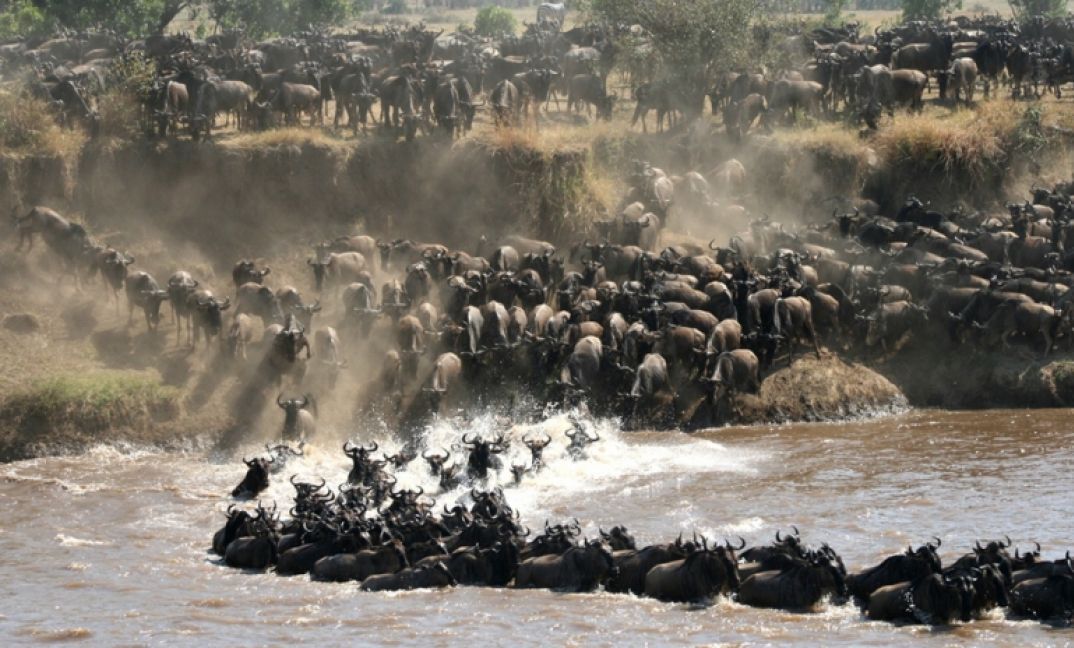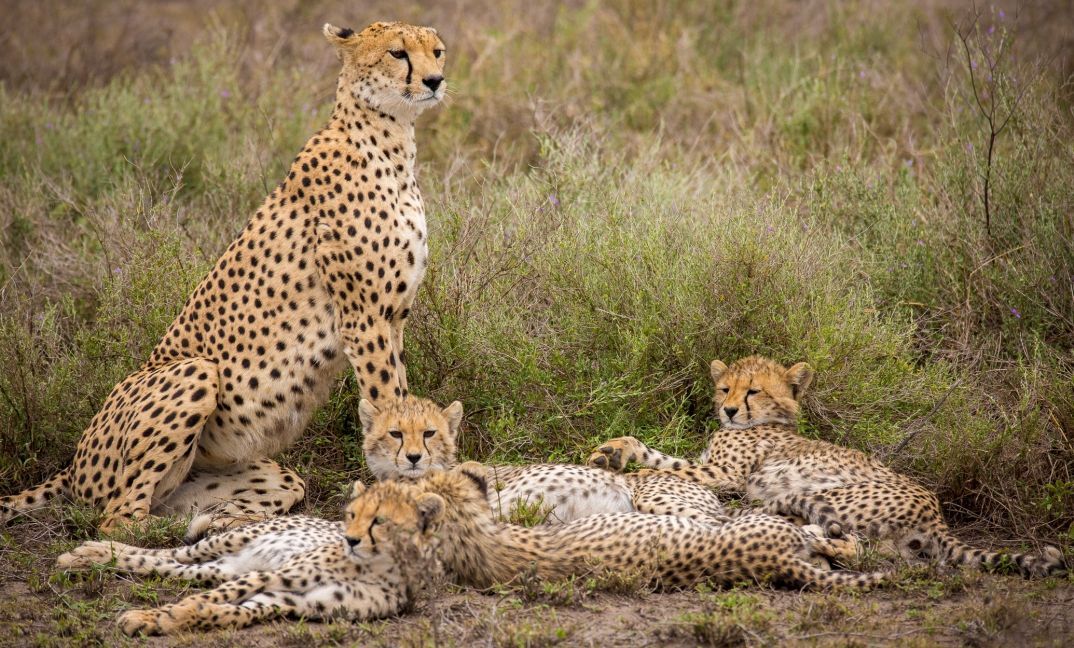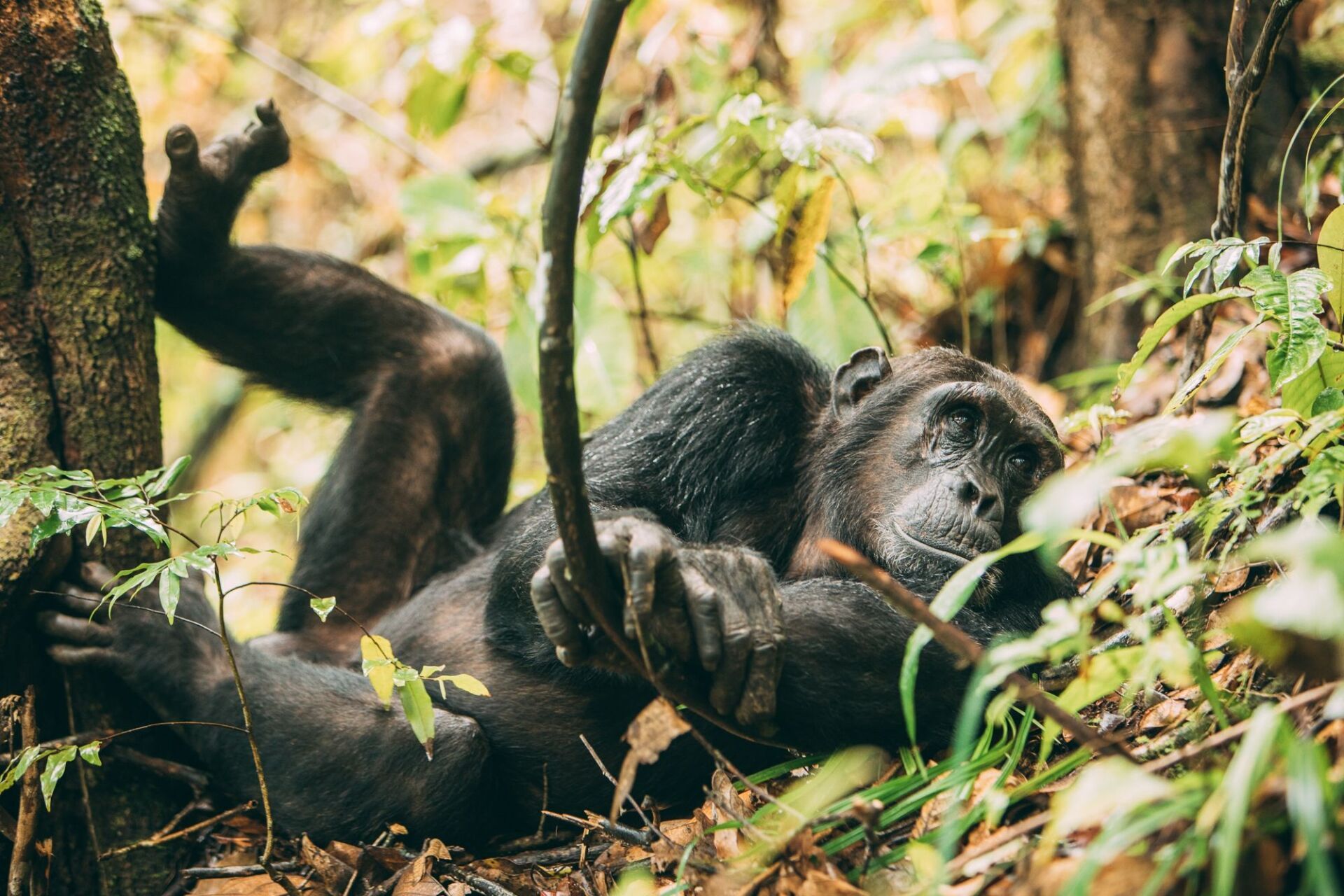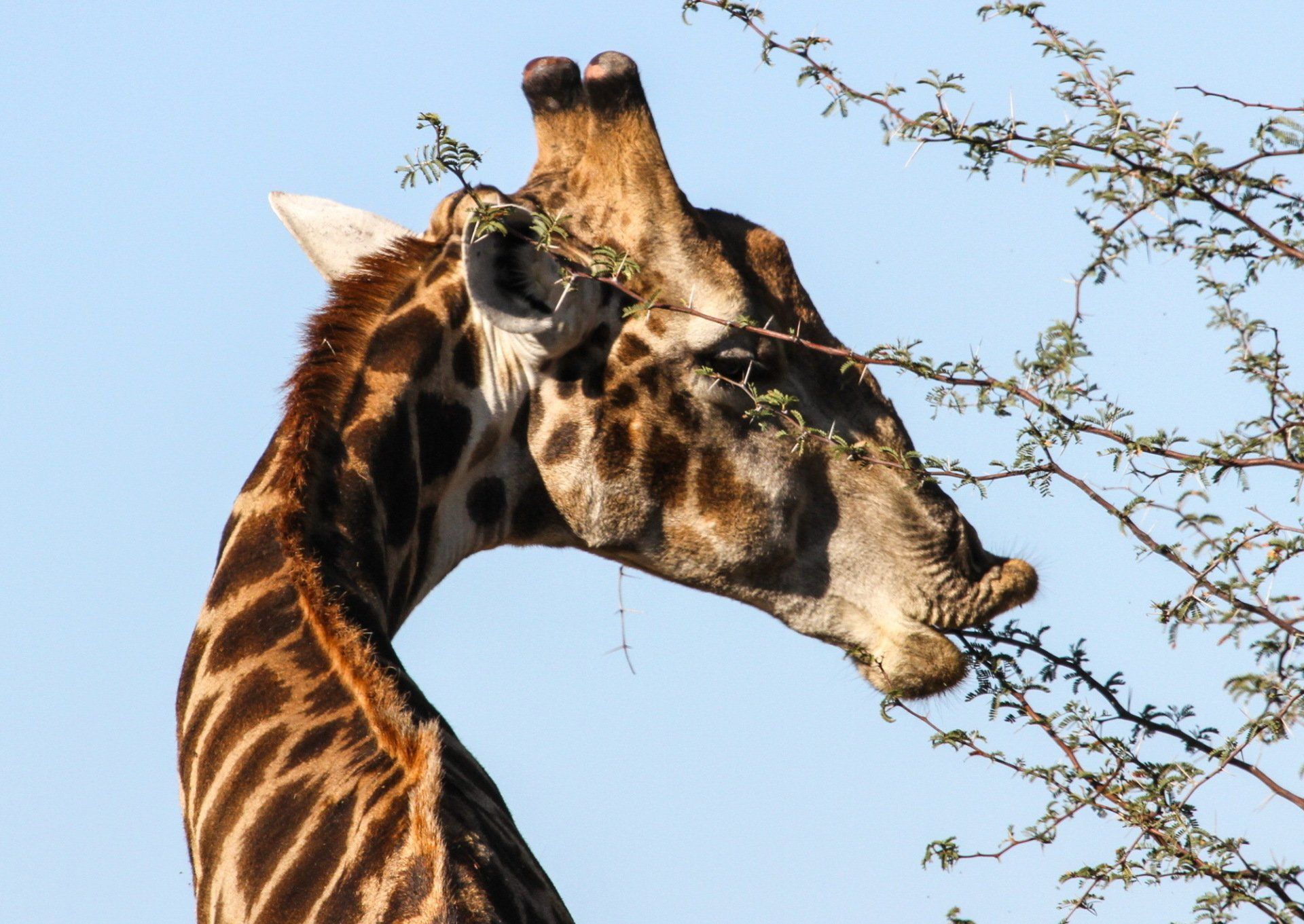ON SAFARI IN TANZANIA
If a wildlife safari is on your wish list, then Tanzania offers some of the best experiences!
Tanzania - wild, vast and beautiful
Locked between the shores of Lake Victoria and the shimmering Indian Ocean, Tanzania is world-renowned for its extraordinary abundance of wildlife and fabulously unspoiled vistas.
Some 100,000 km² of Tanzania is devoted to game reserves. Best known are the endless plains of the Serengeti, host to the annual Wildebeest Migration.
Tanzania is also home both to the exotic spice island of Zanzibar and the magnificent snow-capped Mount Kilimanjaro, the highest mountain in Africa at 5,896 meters.
“Africa is mystic, it is wild, it is a sweltering inferno, it is a photographer’s paradise, … an escapist’s Utopia.”
–Beryl Markham, West with the Night
- About Tanzania
Landscape
The landscape is dominated by plains along the coast, central plateau, and highlands in the north. Mount Kilimanjaro (5, 895 m) is the highest point in the country and in Africa. Tanzania is bordered by three of the largest lakes on the continent: Lake Victoria (the world’s second-largest freshwater lake) in the north, Lake Tanganyika (the world’s second deepest) in the west, and Lake Nyasa in the southwest.
Flora
Tanzania’s forests offer over 50 tree species and 200 species of shrubs.
Fauna
The East African plains support some of the last great herds of wildlife left in the world, offering a greater number and diversity of species than any other continent: Tanzania offers over 80 major species, including ‘The Big 5’ (elephant, lion, buffalo, rhino and leopard), and 600 species of butterfly.
Avifauna
From glacial mountain to savannah plain, semi desert to tropical rainforest, Tanzania’s botanical versatility supports more than 1,000 bird species.
People & Culture
Like much of East Africa, Tanzania is home to the fiercely traditional and striking-looking Masai people; seeing an isolated, red-robed warrior stalk the plains is a lasting image of Tanzania. Their beaded jewelry and red checked blankets make good souvenirs to buy. Tanzania also offers other interesting arts and crafts, most notably the Makonde sculptures carved in ebony, and Tanzanite, a turquoise-blue semi-precious stone unique to the country.
World Heritage Sites
Ngorongoro Conservation area, Selous Game Reserve, Serengeti National Park, Kilimanjaro National Park and Kondoa Rock Art Sites.
National museums and historical sites
Olduvai Gorge, The National Museum of Dar es Salaam, The Catholic Mission and prison of Bagamoyo, Ujijii Cultural Centre, Sukuma Museum, Mwanza, The Amboni Caves and Hot Springs, the Tongoni Ruins, the National Museum of Zanzibar, also the Kidichi Persian Baths, the House of Wonders, the Arab Fort, Livingstone’s House, Mangapwani Slaves Caves, the Maruhubi Palace, the Old Slave Market and the People’s Palace of Zanzibar.
- Wildlife Regions & National Parks
National Parks and Reserves
Some 100,000 km² of Tanzania is devoted to wildlife preservation, including the famous Serengeti, Lake Manyara and Tarangire National Parks, Olduvai Gorge – the ‘Cradle of Mankind’, the enthralling Ngorongoro Crater – the ‘eighth wonder of the world’, and then there is the massive wilderness of the largely undiscovered Selous Game Reserve.
Tanzania has more than 20 game reserves including the world’s largest, the Selous. The game parks of Tanzania have been set aside by the government as wildlife and botanical sanctuaries that enjoy a high degree of protection and management. 25% of Tanzania is gazetted as national parks and reserves, making conservation a major element in land use. Forest reserves make up 15% of the country.
Serengeti National Park is an enormous ecosystem of many facets. Established in 1951, Serengeti National Park covers an area of 14,763 km². The name Serengeti is derived from the Maasai word ”Siringeti” which means an extended area.
The principal features of the Serengeti Park are the short and long grass plains in the south, the acacia savannah in the central area, and the extensive woodland.
The peak months for the Wildebeest migration are between July and October, when 1.5 million wildebeest together with half a million zebra go on their eternal search for water and pasture.
Year-round, the concentration of plains game is high – with an abundance of Topi, hartebeest, and gazelle with lions, cheetahs and other predators following closely behind. The Serengeti is also home to a wide variety of bird life.
The UNESCO-listed Ngorongoro Crater – dubbed the ‘Eighth Wonder of the World’ – is a natural amphitheater with one of the densest populations of large animals year-round.
Stretching across some 8 300 km², the Ngorongoro Conservation Area in northern Tanzania boasts a blend of landscapes, wildlife, people and archaeology that is unsurpassed in Africa.
The first view of the crater is absolutely magnificent. It has an area of 265 km² and is about 16 to 19 kms across. The floor lies about 610m below the rim. Rich soils and permanent water sources mean Ngorongoro is an ideal habitat for a huge variety of species in every season. Most of the 30 000 odd animals found here are resident year-round. That includes the Big Five – Ngorongoro is one of the few places where you can see rhino in northern Tanzania.
There is a shallow soda lake that dries up, and there are also springs and streams of fresh water for the animals to drink. There are wildebeest, zebra, lions, hyenas, rhino, cheetah, hippo, gazelle, baboon and all three species of jackal, as well as rich bird life such as ostriches, eagles, geese, Cape Crown Cranes, flamingos, pelicans and more.
Lake Manyara National Park, nestled at the foot of the Great Rift Valley ridge, is two-thirds covered by its eponymous lake – the ‘loveliest in Africa’, according to Ernest Hemmingway.
There is no bad time to visit this diverse eco-system, although game viewing is perhaps slightly better during the dry months, when vegetation is sparser. However, the park is most spectacular during the rainy season, when waterfalls gush down the escarpment, the flora is gloriously green, and the birdlife is prolific.
This national park was established in 1960 and has a total area of 325 km² of which 229 km² is covered by the lake. Manyara is a Maasai word – emanyara – for a plant. Apart from a spectacular setting, the park is famous for its unusual tree-climbing lions and the vast elephant herds it was established to protect. The shores of the lake, encrusted with pink flamingo, attract more than 400 species of birds, many of them waterfowl or migrants. Large herds of buffalo, cheetah, Masai giraffe and impala roam the lake shores and the forested valley slopes.
A Lake Manyara safari is a fascinating experience as the park is excellent for bird watching and also features a ground-water forest; acacia tortilis woodland and hot springs called Maji Moto. Permanent streams flow from the volcanic rocks below the rift wall.
Tarangire National Park, dotted with baobabs and shimmering acacias, is often overlooked and therefore quiet, even in the ‘busy’ season.
Named for the Tarangire River which flows through it and often described as Tanzania’s most underrated national park, Tarangire is one of Africa’s little-known gems, with four of the Big Five residing within the park.
Boasting a variety of wildlife as diverse as its landscape, Tarangire is also home to Tanzania’s largest population of African elephants. Set against a backdrop of majestic baobab trees and twisted acacia, it makes for a beautiful experience.
Tarangire is outstanding seasonally for wildlife. In the Dry season, the Tarangire River is a magnet for migratory animals such as wildebeest, zebra, common eland, hartebeest, gazelle, buffalo and elephant – of which there are more than you can imagine.
Activities can include guided walks and cultural interaction with the Datoga and Maasai people.
Olduvai Gorge: One of the most fascinating attractions in the area is the Olduvai Gorge, where an old river has carved away the rock to expose layer upon layer of volcanic soil. This is where Dr Louis and Mary Leakey found the remains of hominids “Nutcracker Man” and “Toolmaking Man”.
The “Cradle of Mankind” now has a visitor center where you may hear a short lecture on the work of Dr. Richard Leakey and a small museum where you may see some of his finds, including a giant giraffe – it is hard to believe that they were once even taller!
- Wildebeest Migration
Serengeti and the Circle of Life
Wildebeest spend most of the year grazing in the expansive Serengeti plains. Their migration begins on a quiet note, with vast herds spread over Tanzania’s southern Serengeti around Lake Ndutu. The animals usually move to this region in December after the short rains subside. At that time, the grass throughout the plains has had months to regenerate. Most of the cows are then noticeably expectant. The wildebeest happily settle here, until the onset of the long rains around March or April.
In February the Serengeti becomes an extensive maternity unit with over 400,000 calves being born every year at this time. With the cows’ continued good diet and state of rest, the calves are usually born strong and lively. Within just 3 hours of birth, they are up and running, wasting no time to practice for the long and hard journeys ahead.
By around mid-March, hoards of Gnus begin their annual migration. The grass begins to dwindle, putting pressure on lactating mothers to seek better and more nutritious grass elsewhere. They slowly begin to herd together and move northwest in columns towards the Serengeti plains, past the Naabi Hills. They trek steadily at a slow pace; by now a few hundred thousand wildebeest are on the move. The little ones are a few weeks old, and some even only a few days into the world. But they are strong enough; they tag alongside their mothers into the new, mineral-rich territory. The animals munch on the wholesome grass as they move along towards the west.
Between late July and November, over one and a half million wildebeest accompanied by half again as many zebras and gazelles, migrate from the short-grass plains of the Serengeti to fresh pasture in the grasslands of the Masai Mara; thus creating one of nature’s grandest spectacles. Moving in groups of up to 20,000 at a time they thunder across the plateau hesitating only briefly to cross the Mara River, where many fall prey to the waiting crocodiles. Then, towards the end of October they begin crossing back into Tanzania.
The actual timing of the migration, however, is dictated by the weather and does not always run to schedule. Offering an abundance of herbivores, the Serengeti makes the ideal hunting ground for Africa’s famous ‘big cats’ and hosts large populations of lion. It also offers the best chance of spotting a leopard in the wild. Other predators include cheetah and the spotted hyena.
- About Zanzibar
For centuries past, cardamom, clove and cinnamon culled from the fabled spice gardens of the enchanted island of Zanzibar have been prized by sultans and princes alike.
Now you can pick them for yourself on a spice tour that takes you from the winding alleys, carved doors and cool courtyards of Stone Town, through the slave caches of the coral bays, past the blue-domed bath-houses of long dead sultans and out onto the silver and blue ribbons of Zanzibar’s perfect beaches.
To enter the world of Zanzibar is to step through the looking glass into the world of a thousand and one nights and black eyes that smile from behind deep veils. There is a House of Wonders and a street of food, a Palace Museum, an ancient slave market, an age-old fort, a ruined harem and the house where Dr Livingstone once lived. There are Red Colobus Monkeys and dolphins and a bright tapestry of Arab, African and Swahili culture, folklore and cuisine that are as mesmeric as myth.
There are also wide-open beaches, a plentiful selection of wonderful hotels, and all the water sports facilities that you could possibly wish for.
- Country Facts | Climate | Safari FAQ's
The United Republic of Tanzania
• Area: 945,087 km² includes the islands of Mafia, Pemba, and Zanzibar
• Capital: Administrative: Dodoma, Commercial: Dar es Salaam
• Currency: Tanzania Shilling
• Population: 41 million (Christian 30%, Muslim 35%, indigenous beliefs 35%; Zanzibar – more than 99% Muslim)
• Official language: Swahili, English (official, primary language of commerce, administration, and higher education), Arabic (widely spoken in Zanzibar), many local languages.
• Time: GMT +3
Climate:
Tanzania’s climate is predominately tropical. Coastal areas are usually hot and humid, but on the beaches a sea breeze cools the air considerably. The average day temperature is 30°C.
Tanzania has two rainy seasons – the long rains from late March to May and the short rains from November to January. The long rains fall in heavy downpours, often accompanied by violent storms, but the short rains tend to be much less severe.
The hottest time of the year is from December to March, before the long rains begin. The coolest months are June, July and August, when the skies are often overcast.
In high-altitude areas such as Kilimanjaro and the Ngorongoro Highlands, temperatures can fall below the freezing mark at night.
Safari FAQ’s
Wildebeest Migration Safari
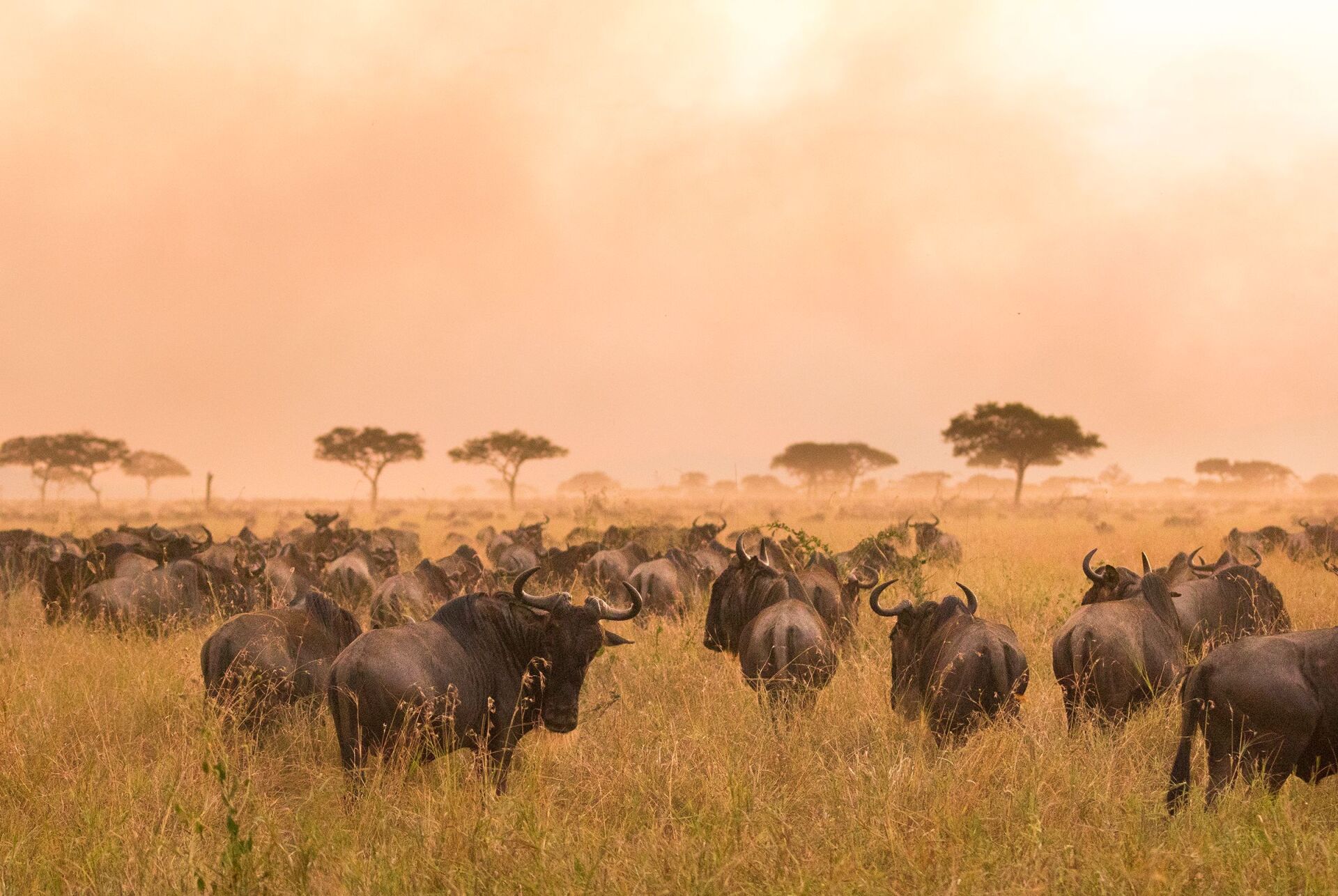
The annual wildebeest migration in Kenya and Tanzania attracts over a million wildebeest, half a million zebra and an accompanying cast of predators through some uniquely different ecosystems.
Travelling by air, this safari starts in Nairobi and ends in Arusha, allowing you to experience the thrill of watching the phenomenon of vast herds of game while staying in both Meru-style tented camps and the comfort of a traditional safari lodge.
Designed to track the progress of the herds, your migration safari will be accompanied by expert guides, ensuring you have a memorable experience.
-
Safari Highlights
• Visit iconic destinations in Kenya & Tanzania
• Fantastic wildlife & excellent guiding
• See the Big 5 in the Masai Mara & Serengeti
• Catch the Wildebeest Migration
• Personalized service & intimate lodges
Contact Tanzania Travel Specialist, Christine Boecker to arrange your Migration Safari
(HoW, AM)
-
Itinerary Overview
Day 1 Nairobi, Kenya
On arrival you will be met by your safari guide and transferred to a beautiful mansion, that has been converted into a luxurious boutique hotel. The capital of Kenya is a thriving, bustling and heady metropolis but the drive to your hotel takes you into the tree-lined roads of Karen, one of the city’s most upscale neighbourhoods. Your accommodation sits on 2.5 acres that blends the elegance of gracious living with the spirit of modern Africa in an exclusive and serene setting. Relax and unwind before heading out on safari.
Days 2-5 On Safari in the Masai Mara
After breakfast you will be met and transferred to Wilson Airport where you will catch your flight to the world-famous Masai Mara National Reserve. Once here, you will be transferred to your beautiful safari lodge, located high above the floor of Africa’s Great Rift Valley.
Enjoy an afternoon nature walk or game drive followed by a sundowner drink before returning to camp in time for dinner.
Perched on the edge of the escarpment, each of the 15 spacious en-suite safari tents has floor-to-ceiling glass spanning the front for the most dramatic views. The interiors are classic and comfortable, with splashes of Maasai ref, khaki, copper and brass.
The following days are dedicated to exploring the rolling savannahs of the Mara on exciting game drives, searching for the migrating wildebeest and other prolific resident game. Find a scenic spot for a delicious picnic lunch and return to camp for nights around the campfire.
Days 5-8 Discover the Serengeti
Today you will fly to the Serengeti, from where you will head to your Migration Camp to begin your thrilling Serengeti experience. This camp offers luxurious under-canvas accommodation, and relocates periodically, following the Great Wildebeest Migration as it moves across the Serengeti-Mara ecosystem.
Depending on the time of year you will be able to witness the incredible river crossings, calving or rutting stages of the annual cycle. Excellent year-round game viewing allows you to see large numbers of elephant, hippo, zebra and giraffe as well as apex predators including lion, leopard, cheetah and hyena on one of Africa’s most iconic landscapes.
Day 9 End of Safari
Savour your last morning in the African savannah before being flown to Arusha in time to connect with your onward flight.
Contact Tanzania Travel Specialist, Christine Boecker to arrange your Migration Safari
(HoW, AM)
Northern Wildlife Safari
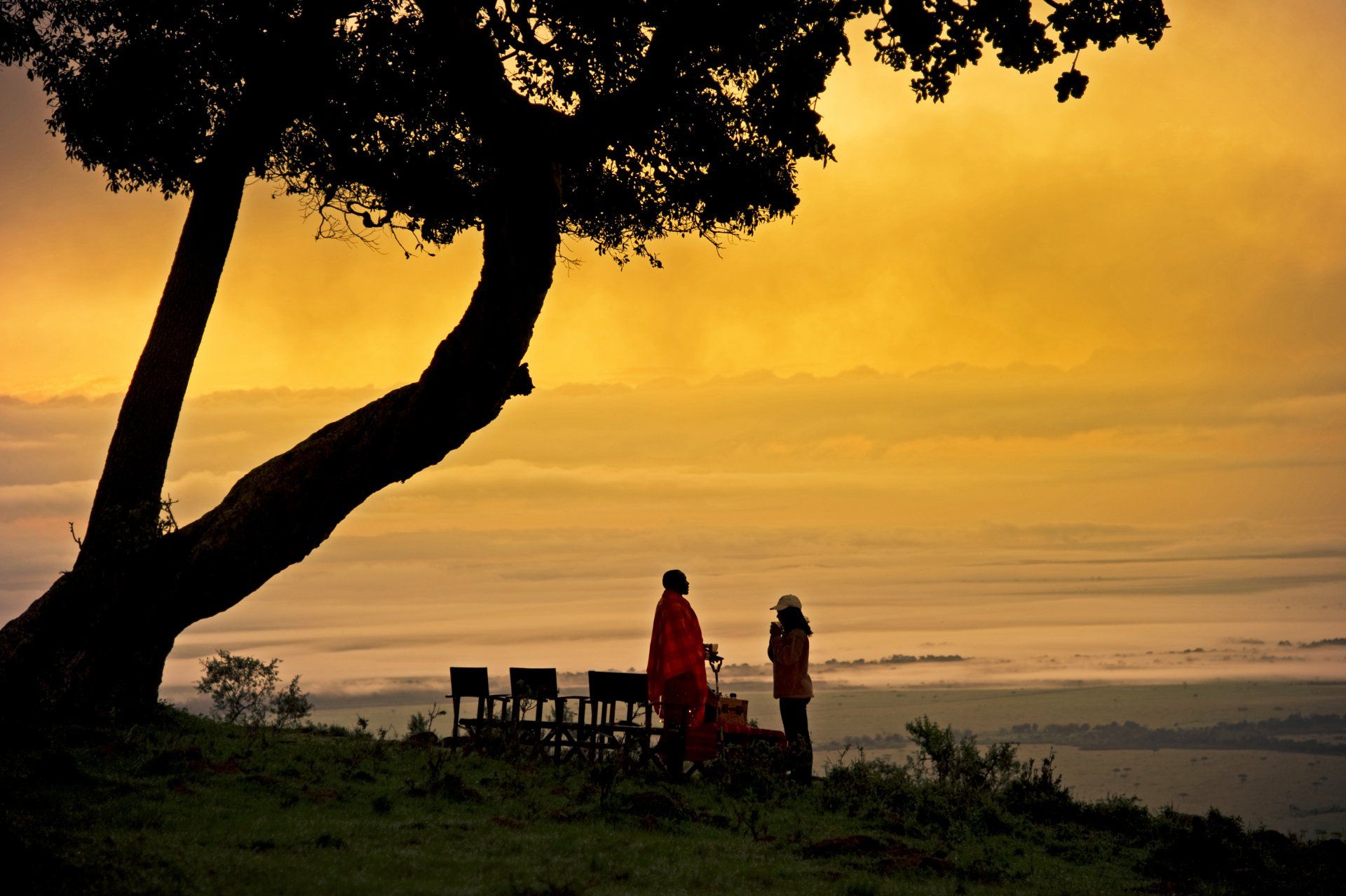
If you appreciate the ultimate luxury of private conservation areas, where Africa’s wildlife and culture can be enjoyed away from the beaten track, this exclusive air safari is the perfect choice.
Commence your stay in a Bedouin style tented camp in the magnificent Serengeti National Park. Continue on to a wildlife concession leased from Maasai landlords (Ololosokwan Maasai community), marvel at the 8th wonder of the world, the Ngorongoro Crater and enjoy the diverse habitat of Lake Manyara National Park, famous for its tree-climbing lions.
-
Safari Highlights
• 7 nights in luxury Meru-style tented camps and luxury Safari Lodges with private facilities
• Three meals daily, soft drinks, house wines, local brand spirits and beers, teas and coffees
• Inter-camp flights and transfers
• Scheduled safari activities in in open 4×4 game vehicles, refreshments on game drives
• Services of highly qualified professional local guides
• Park entrance and conservation fees
Contact Tanzania Travel Specialist, Christine Boecker to customize this safari for you
(aB)
-
Itinerary Overview
Day 1 Kilimanjaro – Serengeti, Tanzania
You will be welcomed at Kilimanjaro Airport and flown to the Serengeti National Park.
Experience 3 nights under canvas in a Bedouin style tent with en-suite bathroom and outside bucket shower.
Days 2 & 3 South-Eastern Serengeti
With two full days to enjoy the park, your options are wide. Breakfast, lunch and dinner are served at the camp. Morning and afternoon game drives, as well as optional guided nature walks can also be taken.
Days 4 & 5 North-Eastern Serengeti
Morning flight to a remote corner of the north eastern Serengeti, and enjoy 2 nights at a camp overlooking the incredible wooded hillsides, rolling grasslands, marshes and forested river banks which surround it. A truly exclusive Tanzanian safari experience!
Days 6 & 7 Ngorongoro Crater
Morning flight and transfer to Ngorongoro Crater, where you can indulge your senses for 2 nights in a suite with en-suite bathroom with bath and shower. Morning and afternoon game drives, as well as optional guided nature walks can also be taken.
Day 8 Lake Manyara
Lake Manyara National Park offers a wilderness experience in diverse habitats, from its Rift Valley soda lake to dense woodlands and steep mountainsides. Apart from a spectacular setting, the park is famous for its unusual tree-climbing lions and the vast elephant herds it was established to protect. The shores of the lake, encrusted with pink flamingo, attract more than 400 species of birds, many of them waterfowl or migrants. Large herds of buffalo, cheetah, Masai giraffe and impala roam the lake shores and the forested valley slopes. A Lake Manyara safari is a fascinating experience as the park also features a ground-water forest; acacia tortilis woodland and hot springs called Maji Moto.
Day 9 End of Safari
Spend your last morning enjoying the uninterrupted views of the spectacular Ngorongoro Crater, before being transferred to the airport for home-bound flight.
Extend your Safari
Fly to Zanzibar for some R&R on the beach, or explore Uganda or Rwanda and come face-to-face with a Mountain Gorilla.
Contact Tanzania Travel Specialist, Christine Boecker to customize this safari for you
(aB)
Big Game & Chimps Safari
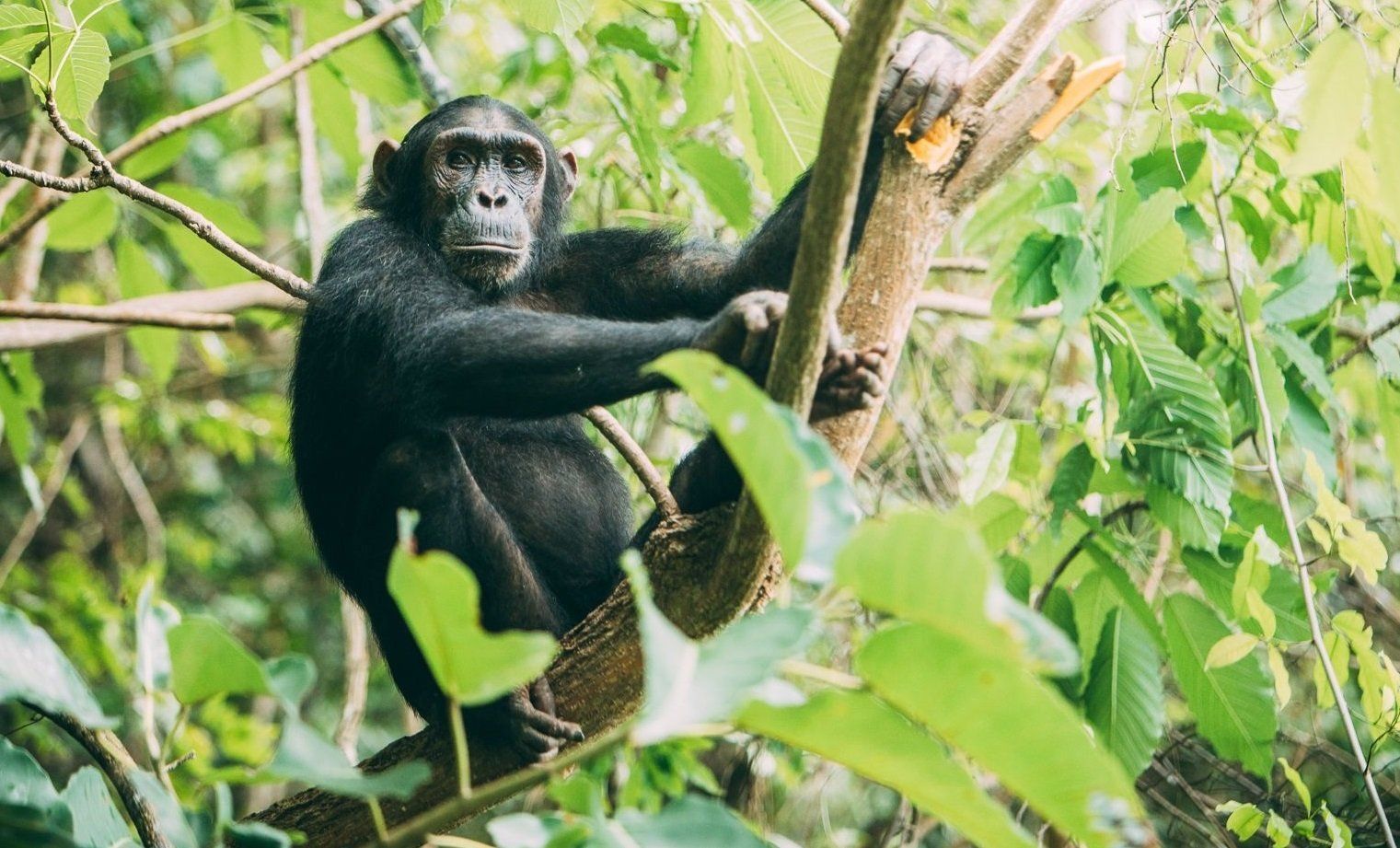
Embark on a legendary journey as you venture off the beaten track for some of the richest wildlife experiences in Tanzania's vast northern and western areas – remote, wild and beautiful.
This safari combines best of the Serengeti - ideal for catching the wildebeest migration, with the adventure of meeting the most privileged primates on the planet: the wild chimpanzees of Mahale.
The northern Serengeti is lush and green, with fantastic year-round resident game viewing.
The far-flung Garden of Eden of Mahale is located on the cobalt blue Lake Tanganyika, and is backed by forested mountains inhabited by wild chimpanzees. Here time slows down. The beauty is irrepressible.
-
Itinerary Overview
Day 1 Northern Serengeti, Tanzania
Hop on an early flight from Arusha, up over the Ngorongoro Highlands and beyond to the wide plains of the northern Serengeti. Here you will be met by your guide for a short game drive to your camp. Settle into your room, and perhaps head out for a game drive after lunch to see the lay of the land.
Our Serengeti luxury camp consists of only 8 open-fronted rooms with private verandas, which are peppered around Kogakuria Kopje, a tumble of giant boulders that stands proud above the northern Serengeti grasslands. You can see from here for miles! Meals are served al fresco, at camp and during your game drive in the bush. Relax around the pool – again with incredible views across the Serengeti.
Days 2 & 3 On Safari in the Serengeti
The Serengeti is a planetary stretch of wilderness and wild animals: big cats, wildebeest, crocodiles, bound together in a cycle of life and death. And circulating through it like a bloodstream, the Migration, a natural wonder beyond the imagination.
Savour two days on safari as you venture out in custom-built 4x4s, or on foot to explore the winding river lines, rocky outcrops and sweeping plains.
In this eco-system, which bristles with mammals year-round, there is never a dull moment. Over a million wildebeest cross these plains each year on their way to cross the Mara River for greener pastures.
Day 4 To Mahale National Park
Come on a legendary journey to meet the most privileged primates on the planet: the wild chimpanzees of Mahale - and the trackers, guides and helpers who share their leafy Nirvana.
Your arrival into Mahale is pretty unforgettable as you fly low over the mountains and land on the airstrip that sits right on the banks of Lake Tanganyika. Here your guides will meet you and take you by traditional dhow to your next camp, skimming along the banks of the impossibly clear lake with the Mahale Mountains rising dramatically from the beach.
At the lakeshore, on a white sand beach, stands our iconic jungle-chic lodge, consisting of 6 thatched bandas hewn from vintage dhows, each with a relaxation deck and uninterrupted lake views.
Days 5 -7 On Safari in Mahale
This far-flung Garden of Eden is located on the cobalt blue Lake Tanganyika, stretching 500 miles north to south and a mile deep. Here time slows down. The beauty is irrepressible.
On a typical tropical day out, we hike you out into the forest’s dappled sunlight, where wild-living, but habituated chimpanzees romp and commune around us. In the forest there are nine other species of primate, leopards and a host of shy forest creatures.
On the beaches Cape Wild Dog, bushbuck, even the pennant-winged night-jar can be seen, and in the gin-clear waters of the lake tropical fish swim around hippos like butterflies under a billion stars.
Swim in pools under mountain waterfalls, take a kayak out for a dawn paddle and enjoy the sunrise coming up over the mountains. Have sundowners on the wooden dhow or just relax on the warm sandy beach with a drink in hand.
Day 8 End of Safari
Bid farewell to this paradise and head back to the airstrip by boat in time to catch your flight back to Arusha.
Contact Tanzania Travel Specialist, Christine Boecker to customize this safari for you
(NT)
BeWILDered about Africa? We specialize!
Visit About African Safaris to learn what you can experience on your safari. We debunk common safari myths, elaborate on safari styles, describe the Big Five and address frequently asked questions. More >>
TESTIMONIALS

“We travelled through East Africa for 3 weeks. Christine planned the whole trip for us after we got bogged down and confused trying to do it ourselves. You can have confidence that if you book with Christine you will have the trip of a lifetime.”
Brian, Vancouver BC

“We’ve just returned from a fabulous trip to Tanzania and Zanzibar. Everything was top notch and Christine’s arrangements allowed for a well-organized, completely stress free adventure. We would highly recommend TravelBoecker’s services and would undoubtedly use them again.”
Ron, Burnaby BC

“Our East African safari was over the top. We're still pinching ourselves! All the guides were forthcoming with information, and we could see that they loved their work. It was our best vacation ever! Thank you!”
Marta, Abbotsford BC
TRΛVELBOECKER ΛDVENTURES Insider’s Reports:

GET IN TOUCH
TRΛVELBOECKER TΛILOR-MΛDE
Unique Safaris designed to meet your Personal Vision
OVERVIEW
CONTACT
LOCATION
Vancouver BC
Canada
Div. of PTM Ltd. | BC Reg #2806
© TRΛVELBOECKER ΛDVENTURES 2002 - 2022



